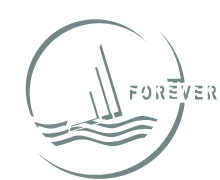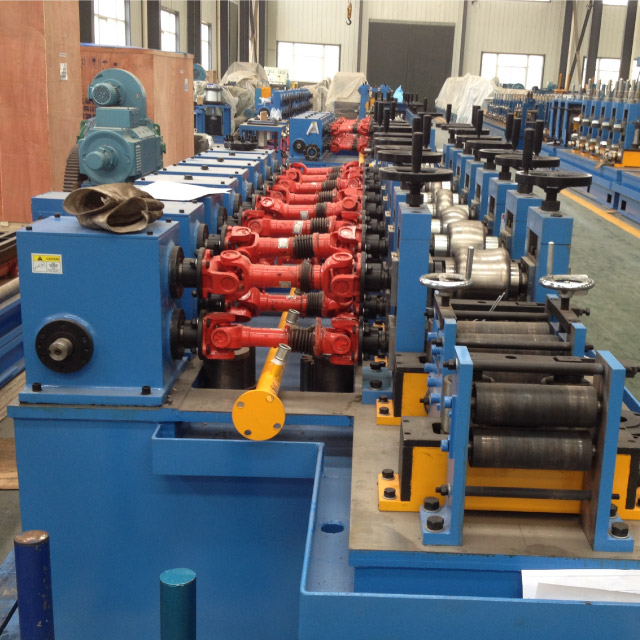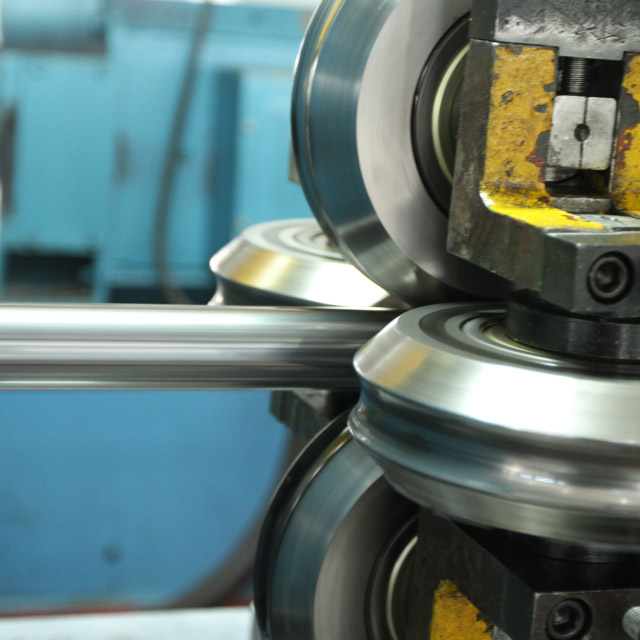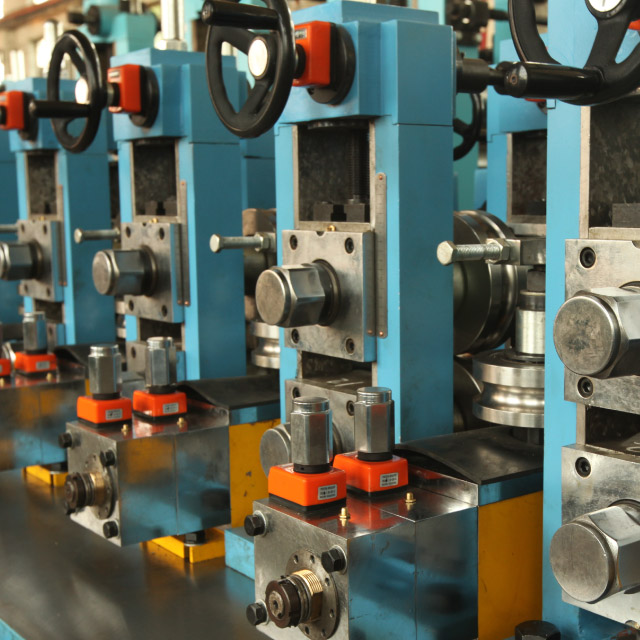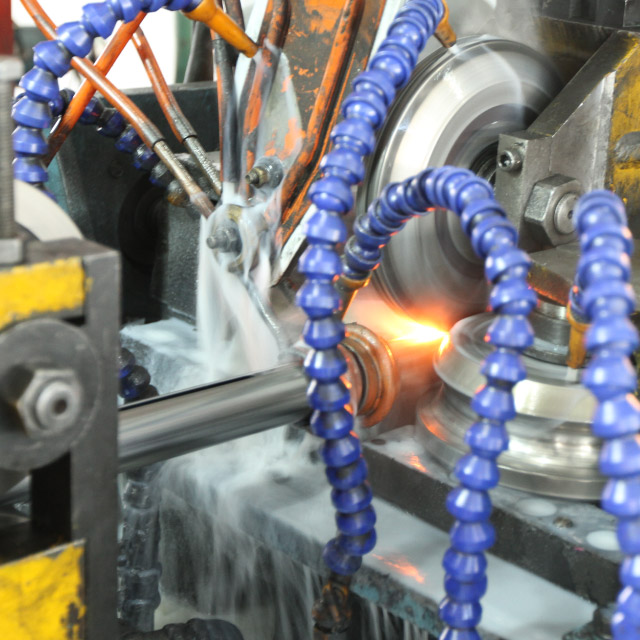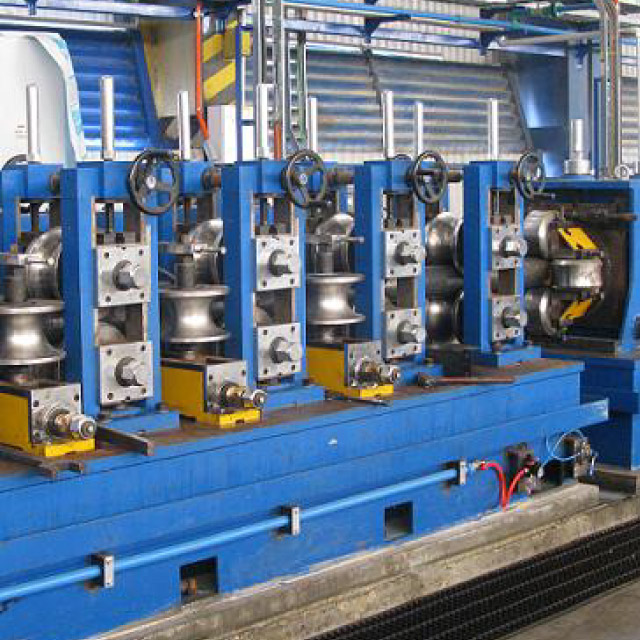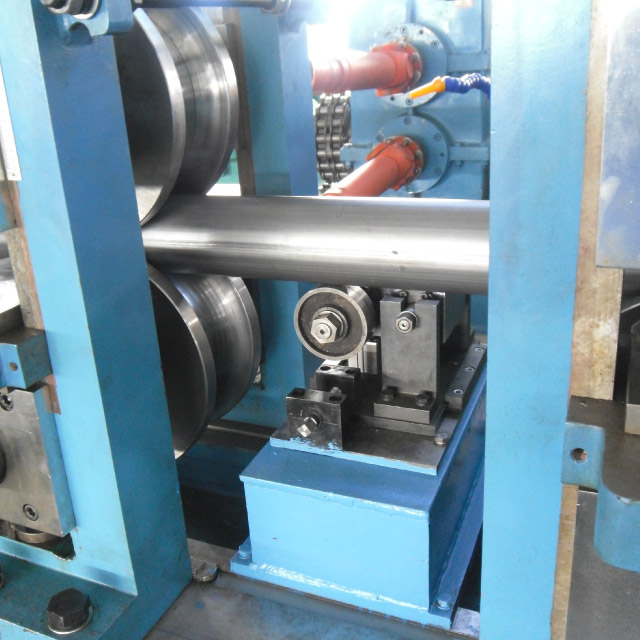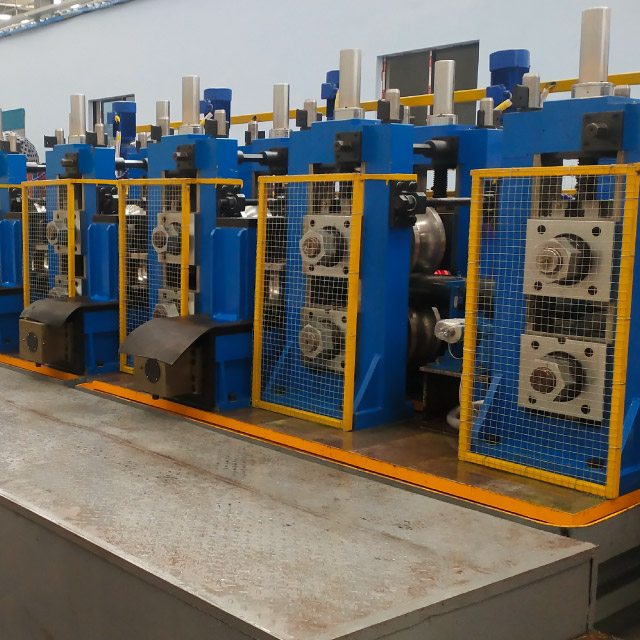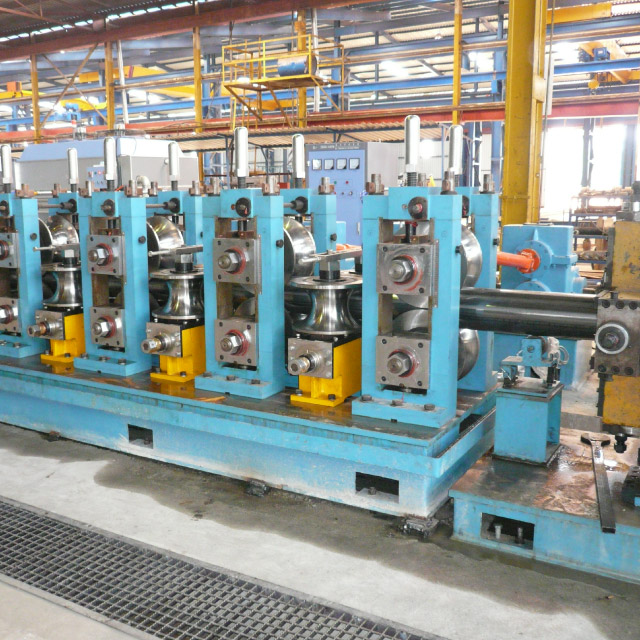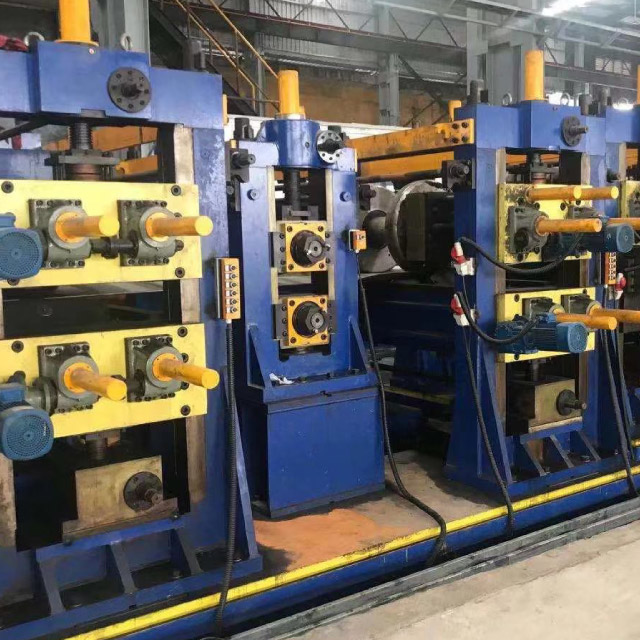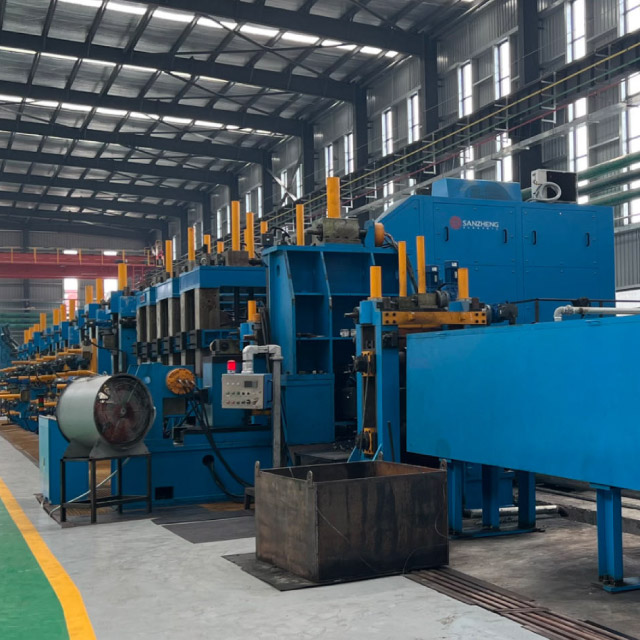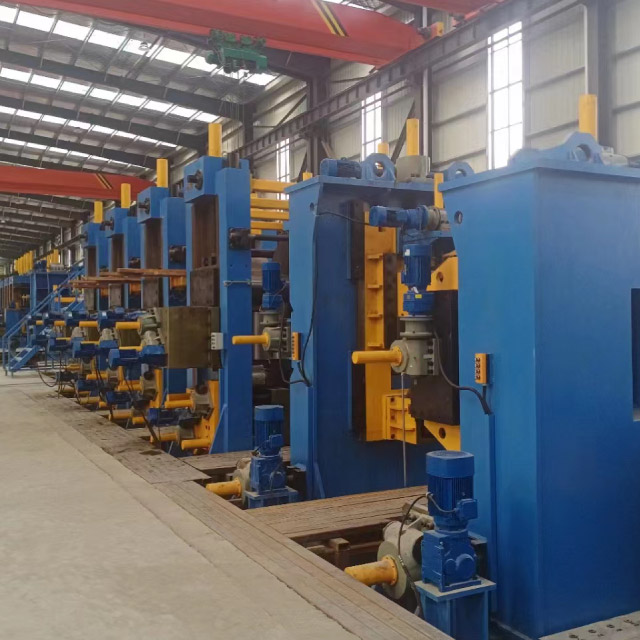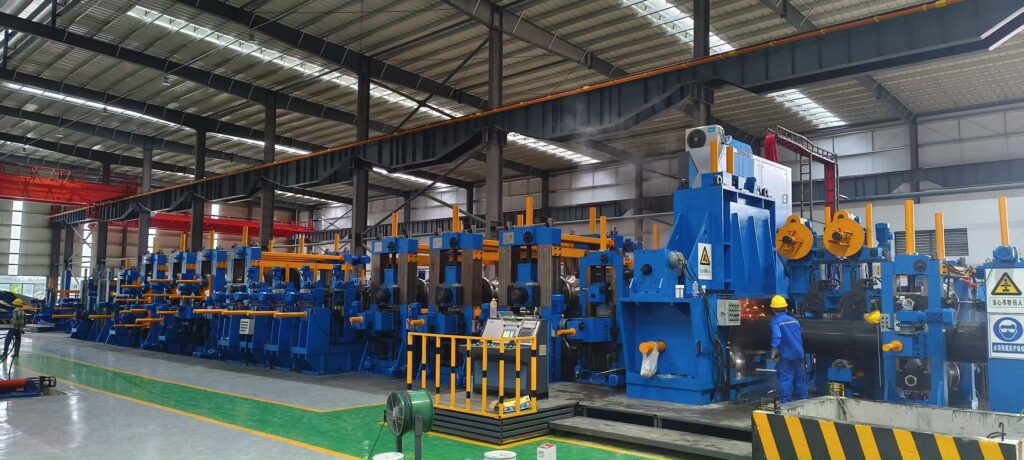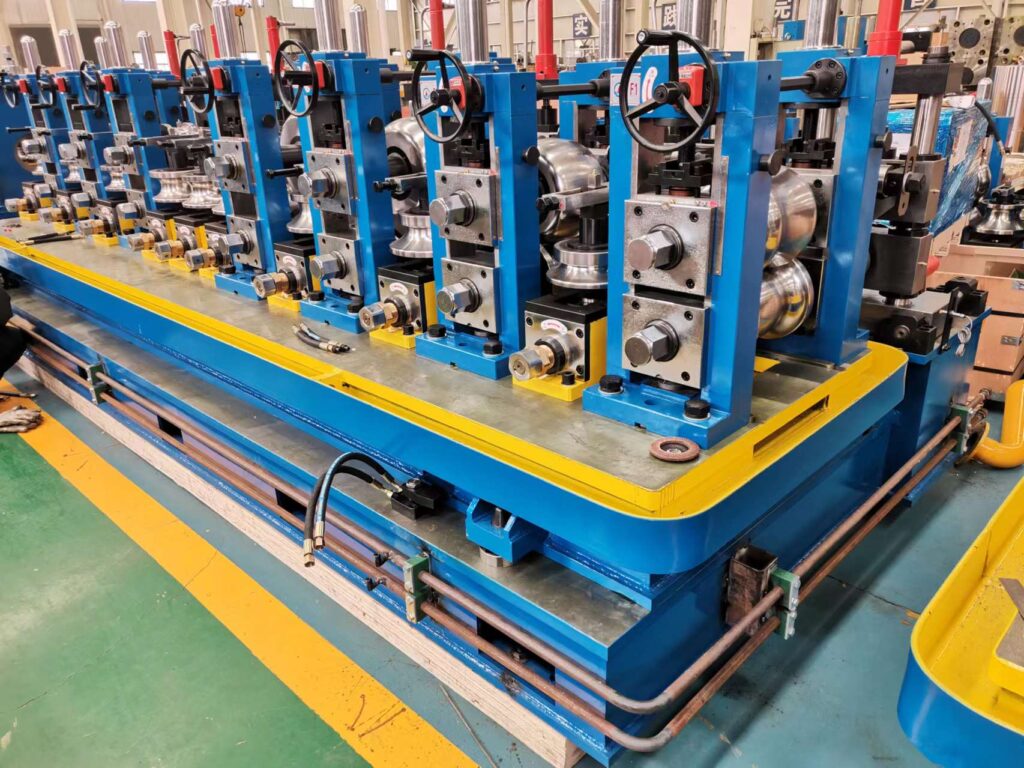ERW Pipe Roll Forming Process Explained
Electrical resistance welding (ERW) pipes have been widely applied in various industries, especially in the oil and gas transportation. ERW pipes are mainly manufactured through a process that involves roll forming and welding steel strip or coil into a cylindrical shape, which normally composed of six different procedures: uncoiling, leveling, roll forming, welding, sizing, and straightening. With the rotation of a set of rolls, the strip deforms gradually and continuously to a circular cross-shaped pipe.
Here’s a step-by-step explanation of the ERW pipe production process:
1. Raw Material Preparation
Steel Coil/Strip: The process starts with hot-rolled or cold-rolled steel coils.
The coils are unwound and flattened using a leveling machine to prepare for forming.
2. Shear and Butt Welding
This process is used to join the ends of steel coils together for continuous production. It includes two steps:
a. Shearing
Purpose: To ensure clean and straight edges on the ends of the steel strips before welding.
Process:
When a coil is about to finish, its trailing edge is cut cleanly.
The leading edge of the new coil is also cut.
This ensures both ends have straight and matching profiles, allowing for precise welding.
b. Butt Welding
Purpose: To join the two coil ends (old and new) to maintain continuous production.
Process:
The sheared ends of the two coils are brought together.
Welding is done by either flash welding or arc welding to butt the two ends together.
After welding, the weld seam is ground flat to avoid problems in later stages.
3. Forming the Pipe
The strip is passed through a series of forming rolls. These rolls gradually bend the strip into a cylindrical shape (tube), leaving a longitudinal seam along the edge.
4. Electric Resistance Welding
The edges of the strip are heated by electric resistance (high-frequency AC or DC current). When the metal reaches a plastic state (not melting), pressure is applied, fusing the edges together without filler material. The result is a continuous, welded seam.
5. Weld Seam Removal and Heat Treatment
External and internal burrs (flash) are removed using scarfing tools. The weld zone is often heat-treated (normalized) to refine the grain structure and reduce residual stress.
6. Sizing and Straightening
The pipe passes through a sizing mill where it is sized to the final OD (outer diameter). It is also straightened to correct any bends or distortions.
7. Cutting to Length
The pipe is cut into standard or custom lengths using flying saws or cut-off machines.
8. Inspection and Testing
NDT (Non-Destructive Testing) such as ultrasonic testing, eddy current testing, or hydrostatic testing ensures weld integrity and dimensional accuracy. Visual and dimensional inspections are also performed.
9. Finishing
Pipes may undergo additional processes like: End beveling or threading Galvanizing or painting Marking and bundling
